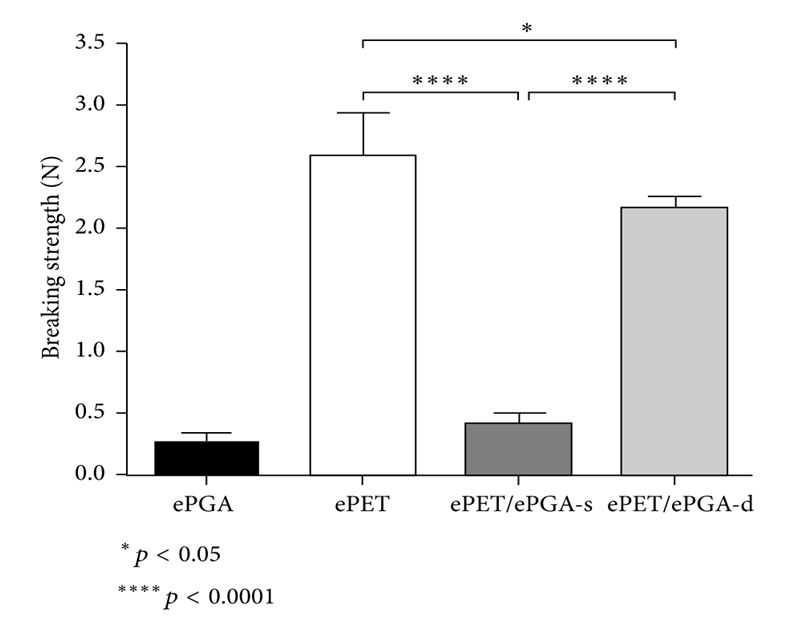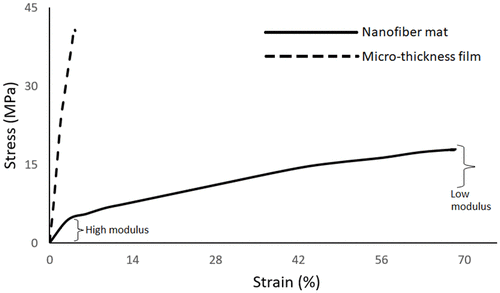▼ Reference
- Chavoshnejad P, Razavi M J. Effect of the Interfiber Bonding on the Mechanical Behavior of Electrospun Fibrous Mats. Scientific Reports 2020; 10: 7709. Open Access
- Gaharwar A K, Mihaila S M, Kulkarni A A, Patel A, Luca A, Reis R L, Gomes M E, Blitterswijk C, Moroni L, Khademhosseini A. Amphiphilic beads as depots for sustained drug release integrated into fibrillar scaffolds. J Control Release 2014; 187: 66.
- Ghosal K, Chandra A, Praveen G, Snigdha S, Roy S, Agatemor C, Thomas S, Provaznik I. Electrospinning over Solvent Casting: Tuning of Mechanical Properties of Membranes. Scientific Reports 2018; 8: 5058. Open Access
- Huang G P, Shanmugasundaram S, Masih P, Pandya D, Amara S, Collins G, Arinzeh T L. An investigation of common crosslinking agents on the stability of electrospun collagen scaffolds. J Biomed Mater Res A. 2015; 103: 762.
- Huang X, Fan S, Altayp A I M, Zhang Y, Shao H, Hu X, Xie M, Xu Y. Tunable Structures and Properties of Electrospun Regenerated Silk Fibroin Mats Annealed in Water Vapor at Different Times and Temperatures. Journal of Nanomaterials 2014; 2014: 682563. Open Access
- Jose M V, Thomas V, Dean D R, Nyairo E. Fabrication and characterization of aligned nanofibrous PLGA/Collagen blends as bone tissue scaffolds. Polymer 2009; 50: 3778.
- Kishan A P, Nezarati R M, Radzicki C M, Renfro A L, Robinson J L, Whitely M E, Cosgriff-Hernandez E M. In situ crosslinking of electrospun gelatin for improved fiber morphology retention and tunable degradation. J. Mater. Chem. B 2015; 3: 7930-7938.
- Matthews J A, Wnek G E, Simpson D G, Bowlin G L. Electrospinning of Collagen Nanofibers. Biomacromolecules 2002; 3: 232.
- Meng L H, Arnoult O, Smith M, Wnek G E. Electrospinning of in situ crosslinked collagen nanofibers. J. Mater. Chem.; 2012F 19412-19417.
- Nabzdyk C S, Chun M, Pathan S G, Nelson D W, You I O, Planneuf M D, LoGerfo F W, Pradhan-Nabzdyk L. Development of a Composite Electrospun Polyethylene Terephthalate-Polyglycolic Acid Material: Potential Use as a Drug-Eluting Vascular Graft. Journal of Nanomaterials, vol. 2015, Article ID 340981, 7 pages, 2015. doi:10.1155/2015/340981. Open Access
- Salmani L, Nouri M. Electrospun Silk Fibroin Nanofibers with Improved Surface Texture. Journal of Textiles and polymers 2016; 4: 75.
- Sen R, Zhao B, Perea D, Itkis M E, Hu H, Love J, Bekyarova E, Haddon R C. Preparation of Single-Walled Carbon Nanotube Reinforced Polystyrene and Polyurethane Nanofibers and Membranes by Electrospinning. Nano Letters 2004; 4: 459.
- Shang S, Yang F, Cheng X, Walboomers X F, Jansen J A. The effect of electrospun fibre alignment on the behaviour of rat periodontal ligament cells. European Cells and Materials 2010; 19: 180. Open Access
- Xu X, Zhang JF, Fan Y. Fabrication of cross-linked polyethyleneimine microfibers by reactive electrospinning with in situ photo-cross-linking by UV radiation. Biomacromolecules 2010; 11: 2283.
- Yao C, Li X S, Song T Y. Electrospinning and crosslinking of zein nanofiber mats. J Appl Polym Sci 2007; 103:380.
- Zaarour B, Zhu L, Huang C, Jin X. Enhanced piezoelectric properties of randomly oriented and aligned electrospun PVDF fibers by regulating the surface morphology. J. Appl. Polym. Sci. 2019; 136: 47049
▼ Credit and Acknowledgement
Author
Wee-Eong TEO View profile
Email: weeeong@yahoo.com
 ElectrospinTech
ElectrospinTech


